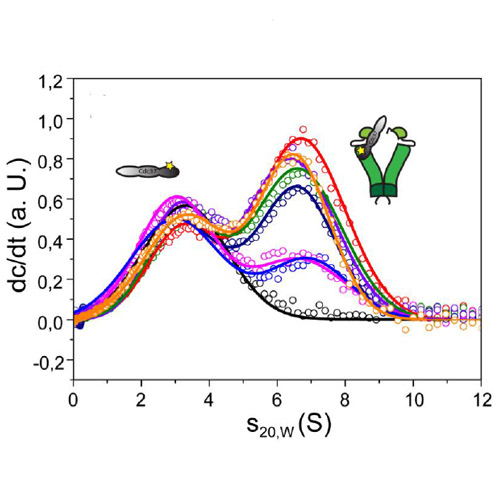Hsp90·Cdc37 Complexes with Protein Kinases Form Cooperatively with Multiple Distinct Interaction Sites
28-Oct-2015
The Journal of Biological Chemistry, 290, 30843-30854 , doi: 10.1074/jbc.M115.693150
Protein kinases are the most prominent group of heat shock protein 90 (Hsp90) clients and are recruited to the molecular chaperone by the kinase-specific cochaperone cell division cycle 37 (Cdc37). The interaction between Hsp90 and nematode Cdc37 is mediated by binding of the Hsp90 middle domain to an N-terminal region of Caenorhabditis elegans Cdc37 (CeCdc37). Here we map the binding site by NMR spectroscopy and define amino acids relevant for the interaction between CeCdc37 and the middle domain of Hsp90. Apart from these distinct Cdc37/Hsp90 interfaces, binding of the B-Raf protein kinase to the cochaperone is conserved between mammals and nematodes. In both cases, the C-terminal part of Cdc37 is relevant for kinase binding, whereas the N-terminal domain displaces the nucleotide from the kinase. This interaction leads to a cooperative formation of the ternary complex of Cdc37 and kinase with Hsp90. For the mitogen-activated protein kinase extracellular signal-regulated kinase 2 (Erk2), we observe that certain features of the interaction with Cdc37·Hsp90 are conserved, but the contribution of Cdc37 domains varies slightly, implying that different kinases may utilize distinct variations of this binding mode to interact with the Hsp90 chaperone machinery.











